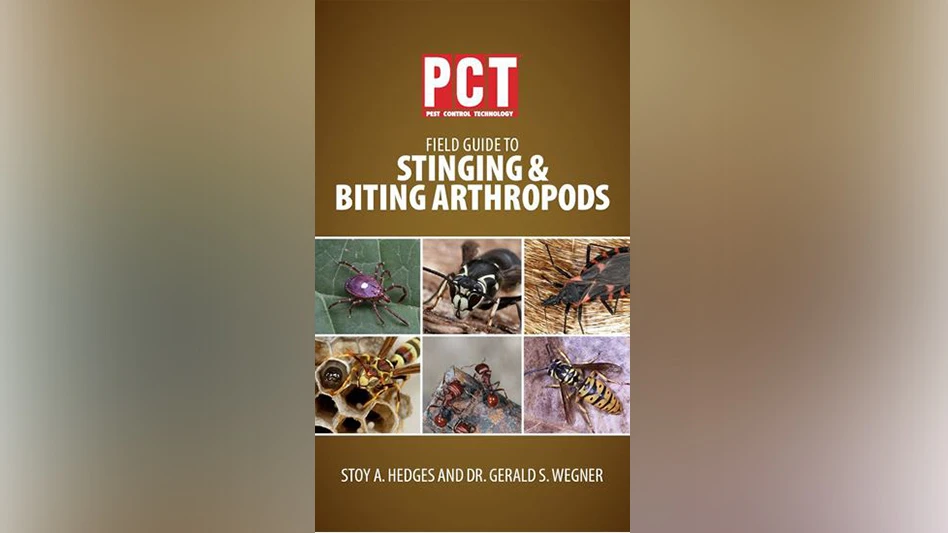
CLEVELAND – PCT is excited to announce we are accepting ordersfor the soon-to-be-published PCT Field Guide to Stinging & Biting Arthropods.
The new digest-sized field guide features more than 380 pages of biology and control insights, and 135 full-color photographs on this important category of pests that represent a public health threat to your customers.
The book was authored by the late Stoy Hedges and Dr. Gerry Wegner, longtime entomologist and training director at Varment Guard Environmental Services, Columbus, Ohio.

“The goal that Stoy and I envisioned was providing useful information about our industry’s most-encountered arthropods in diverse taxonomic categories,” said Wegner, who added that although there are many great reference books on stinging insects, “I suspect the book that pest management professionals will find most handy on a day-to-day basis will be the PCT Field Guide to Stinging and Biting Arthropods.”
Stinging arthropods featured include: Bumble bees, paper wasps, carpenter bees, miscellaneous solitary and semi-social bees, honey bees, yellowjackets and hornets, mud daubers, cicada killers and related sand wasps, velvet ants, fire ants, scorpions, stinging caterpillars and miscellaneous solitary wasps. Biting arthropods featured include: Fleas, ticks, mites, wheel bugs and corsairs, lice, biting flies, mosquitos, bed bugs, bat bugs and swallow bugs, kissing bugs, and occassional biting insects.
Topics covered in the book include:
• Identifying Characters
• Key Biology Points
• Tips for Control
• Medical Importance
• Delusions of Parasitosis
• Pictorial & Taxonomic Keys
• Full-Color Identification Guide
Special emphasis is placed on inspection, observation, and correct identification. “Stoy and I were sticklers for thorough site inspections and observation of activity before the implementation of management measures,” Wegner said. “Similarly, there are some control methods that lend themselves to particular situations, and some that will not give the desired results. Effective pest management is like puzzle-solving. If all the pieces don’t come together, there will be call-backs, unhappy clients, and frustration.”
Wegner thinks the 135 full-color photographs will provide pest management professionals with a powerful tool in aiding with specimen identification and situation recognition. “Stoy’s favorite areas of contribution were the arthropod management sections and his photographs. Stoy and I were blessed to be able to provide the great majority of specimen photos called for by the subject matter.”
The book will be published later this spring. PCT is accepting pre-publication orders from our bookstore, or by calling 800/456-0707.
Latest from Pest Control Technology
- Donny Oswalt Shares What Makes Termites a 'Tricky' Pest
- Study Finds Fecal Tests Can Reveal Active Termite Infestations
- Peachtree Pest Control Partners with Local Nonprofits to Fight Food Insecurity
- Allergy Technologies, PHA Expand ATAHC Complete Program to Protect 8,500 Homes
- Housecall Pro Hosts '25 Winter Summit Featuring Mike Rowe
- Advanced Education
- Spotted Lanternflies, BMSBs Most Problematic Invasive Pests, Poll Finds
- Ecolab Acquires Guardian Pest Solutions





